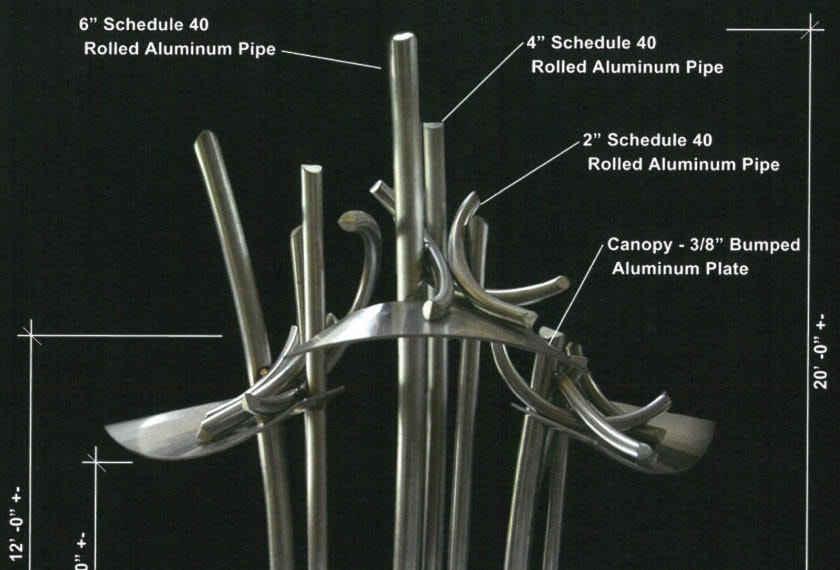Changes to White Rock’s public art policy may be in the wind after the newly elected council took a look at the rendering of the public art piece that is to be installed at Peace Arch Hospital’s McCracken Courtyard.
While council endorsed the project’s management and funding agreement between the city, the Peace Arch Hospital Foundation and Fraser Health, the decision came after lengthy discussion.
Both Couns. Christopher Trevelyan and Scott Kristjanson questioned the wisdom of the previous council’s investing $100,000 in the piece – for which funding had been diverted from potential public art on the waterfront – and Coun. David Chesney asked why the contract had been awarded to an artist from outside of the community.
While the discussion called the entire project into question, Kristjanson ultimately withdrew a motion to rethink it after it was pointed out that most approvals had been granted.
The capper came when financial services director Sandra Kurylo said that, under the contract for the work, funds had been advanced to the artist.
Motion to endorse the agreement was passed with Trevelyan, Kristjanson and Coun. Erika Johanson opposed.
The 20-foot-tall aluminum sculpture, ‘Stande’ – intended as a tribute to the historic contributions of the women of the Peace Arch Hospital Auxiliary – was created by Victoria-based artist Illarion Gallant.
Approved by the city’s public art committee – after a council process that debated whether it should be on city or hospital property – the piece is being funded by $76,000 that would have been budgeted for art at the waterfront parkade, along with $24,000 from the 2018 Community Public Art budget.
According to a corporate report, $85,000 will pay the artist’s fees and $15,000 will go toward site preparation and a plaque.
City staff told council the art represented a stand of sheltering trees, symbolizing the contributions of the auxiliary women.
But after Coun. Helen Fathers said she hoped four existing trees at the site would be replanted, Kristjanson pointed out the irony.
“I have a problem with something that commemorates a stand of trees removing trees,” he said.
“(And) I don’t know that I embrace the art of it.”
Trevelyan noted that, while he is not an art critic, he didn’t think the work adequately represented what it is supposed to represent.
Chesney said the city is “constantly going outside (the community)” for its public art.
“Being such an arts community, I think we should exhaust all avenues that we do not have an artist in our community that can take care of public art installations.”
In response to a question from Coun. Anthony Manning, who had earlier questioned the destruction of a community mural for the construction of the parkade, staff acknowledged there had been no direct public consultation on the new public art: “The selection panel did not feel a need to go broader in terms of asking the public their opinion on the art piece.”
“Maybe this is another policy to revise,” Manning said.
“What I think I’m hearing is that the public art policy may be coming before council sooner rather than later,” chief administrative officer Dan Bottrill commented.
